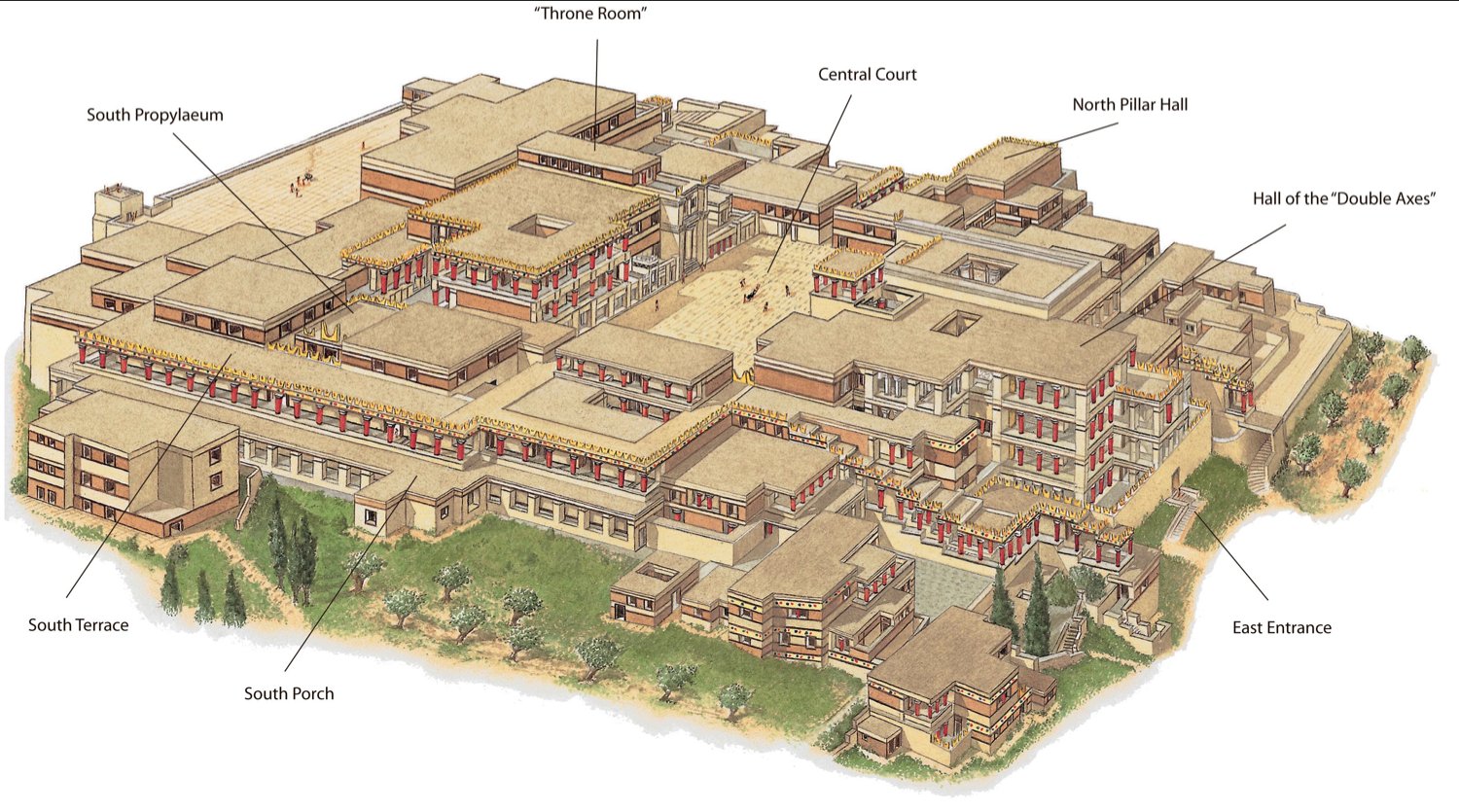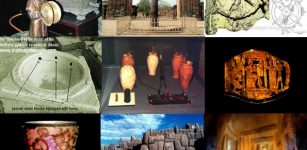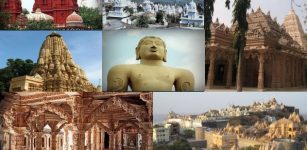10 Reconstructions Of Ancient Cities, Monuments And Sacred Sites
MessageToEagle.com – Anyone interested in ancient history has undoubtedly seen a number of prehistoric ruins that were once part of magnificent ancient monuments, cities and sacred sites.
Today, these ruins are all that is left of buildings raised by powerful and great ancient civilizations that no longer exist. Have you ever wondered what these ancient places looked like when they existed? In this top list we examine 10 magnificent, ancient reconstructions of monuments, cities and other stunning ancient and sacred places.
1. Ancient City Of Knossos – Island Of Crete
Knossos, “renowned as a glorious site of the Greek Bronze Age, the leader of Crete and the seat of the palace of the mythical King Minos and the home of the enigmatic labyrinth,” was the prosperous epicenter of Minoan culture.
Recent fieldwork at the ancient city of Knossos on the Greek island of Crete revealed that during the early Iron Age (1100 to 600 BC), the city was rich in imports and was nearly three times larger than what was believed from earlier excavations.
The discovery suggests that not only did this spectacular site in the Greek Bronze Age (between 3500 and 1100 BC) recover from the collapse of the socio-political system around 1200 BC, but also rapidly grew and thrived as a cosmopolitan hub of the Aegean and Mediterranean regions.
2. Rathcroghan Mound – Ireland

This visualisation is based on an interpretation of the archaeological and geophysical surveys undertaken by the ArchaeoGeophysical Imaging Project and the School of Geography and Archaeology, NUI Galway.
(©J.G. O’Donoghue / Roscommon County Council 2015)
The magnificent and enigmatic Rathcroghan Mound in Ireland is on the UNESCO World Heritage list. At this mysterious place, ancient kings were inaugurated at the ceremonial heart of Rathcroghan. The mound in the fort of Rathbrennan is also the place where Patrick is said to have met the king of Connacht and Cailte, the nephew of Fionn mac Cumaill.
This ancient site witnessed the rise and fall of great tribes, wealthy chieftains and dynastic families. Some of these went on to rule the whole island as high kings, ensuring the continuing legacy of this unique complex well into the modern era.
3. The Ziggurat Of Etemenanki In Babylon
Etemenanki was the Sumerian name of a ziggurat dedicated to Marduk in the city of Babylon. The city of Babylon had been destroyed in 689 BCE by Sennacherib, who claims to have destroyed the Etemenanki. The city was restored by Nabopolassar and his son Nebuchadnezzar II. It took 88 years to rebuild the city; its central feature was the temple of Marduk (Esagila), with which the Etemenanki ziggurat was associated. The ziggurat was rebuilt by Nebuchadnezzar II. The seven stories of the ziggurat reached a height of 91 meters, according to a tablet from Uruk and contained a temple shrine at the top.
4. Palace Of Sargon, Iraq
King Sargon II (721-705 B.C.) had a beautiful palace in Khorsabad, Iraq. Khorsabad takes its name from a modern Iraqi village that stands on the ruins of an ancient city called Dur-Sharrukin. Dur-Sharrukin (“Fort Sargon”) was constructed as a new capital city by the Assyrian king Sargon II shortly after he came to the throne in 721 B.C.
The city had not been completed when Sargon died in 705 B.C. His son and successor, Sennacherib, moved the capital to the old established city of Nineveh, about 15 miles to the south, and Dur-Sharrukin appears to have been largely abandoned. Archaeological excavations reveal Sargon’s palace had been richly decorated with relief-carved stone slabs. Many of these, including the fragments of a complete human-headed winged bull once guarded an entrance to the throne room.
5. Ziggurat Ur In Ancient Mesopotamia
The ziggurat is the most distinctive architectural invention of the Ancient Near East. Like an ancient Egyptian pyramid, an ancient Near Eastern ziggurat has four sides and rises up to the realm of the gods. One of the largest and best-preserved ziggurats of Mesopotamia is the great Ziggurat at Ur. This artist rendering depicts when Babylon was a city-state of ancient Mesopotamia.
6. Ancient Egyptian Capital Tell El-Amarna
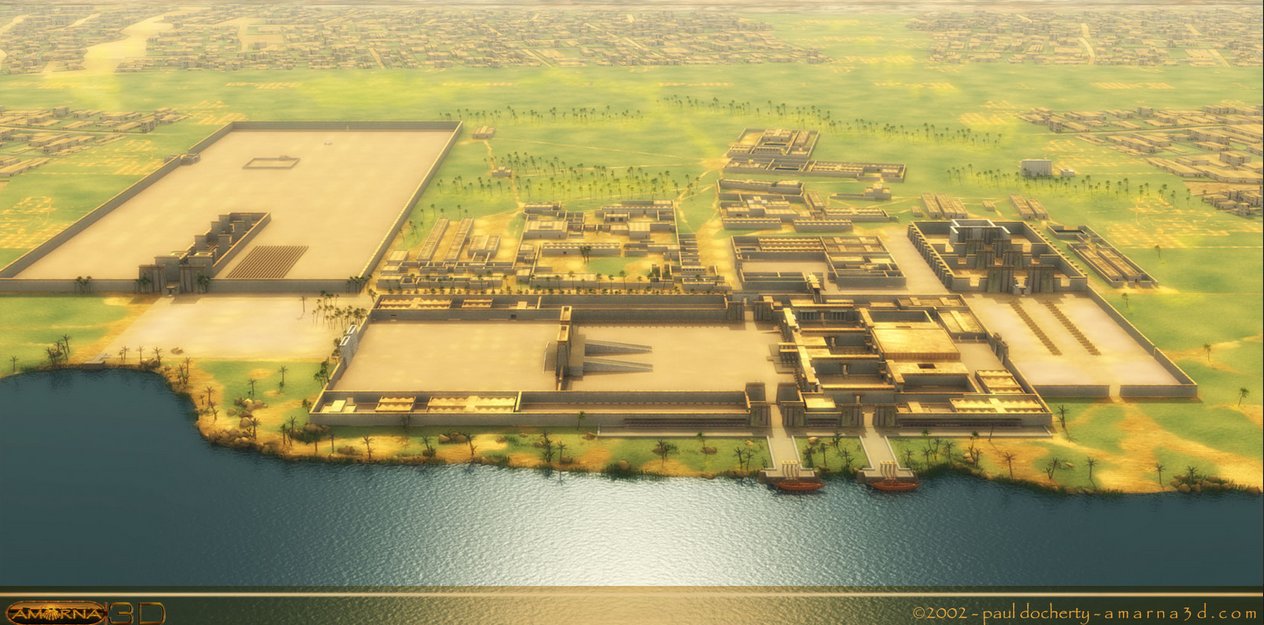
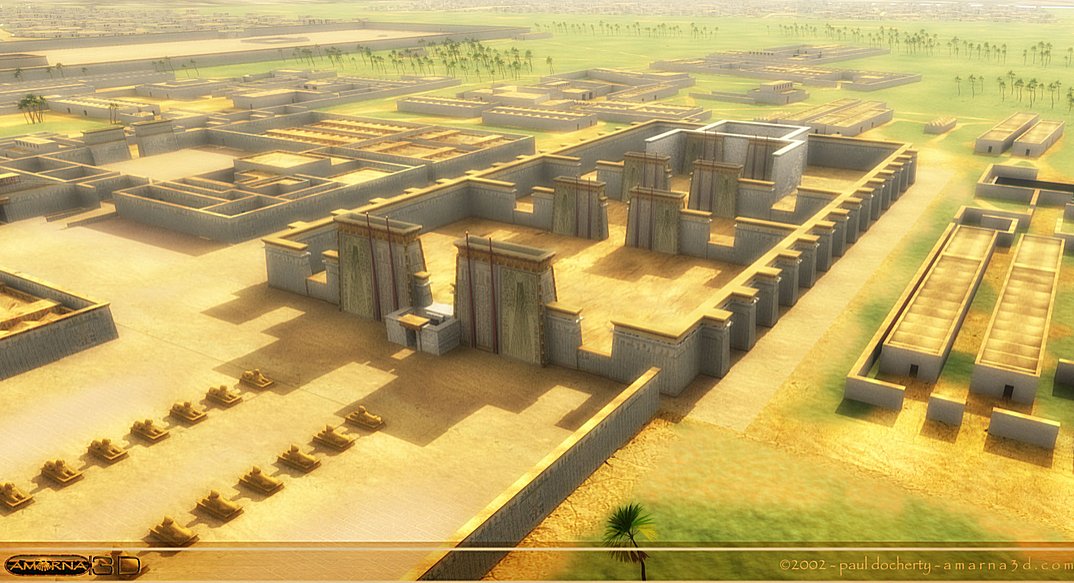
The layout of Tell el-Amarna, ancient Egypt’s capital during the reign of pharaoh Akhenaten (1353B.C–1336B.C), has been revealed through remote sensing techniques. Experts have created a detailed layout of the ancient city including its main streets, sections used for burial, ramps and transportation paths from the mines to the harbor. The city was abandoned and deliberately ignored by followers of God Amun shortly after Akhenaten’s death.
7. Rosalila – Temple Of TheEarly Classic Copan
Copán is a locale in western Honduras, in the Copán Department, near to the Guatemalan border.
The ruins of the Copan is one of the most important sites of the Mayan civilization. This is the site of a major Maya kingdom of the Classic era (5th – 9th Centuries).
Rosalila is the temple of the early classic period. It is the most completely preserved example of the art and architecture of this period discovered to date.
The facades of the temple are elaborately decorated with complex religious messages. The themes are cosmological, and emphasize the Sun God, K’inich Ahau – divine patron for Maya kings, and the spiritual namesake of the founder of the dynasty, K’inich Yax K’uk Mo’.
The temple is located over a three-meter tall terraced pyramid, named “Azul.” There are seven steps on the principal stairway and the fifth step has a hieroglyphic dedication date: February 21, 571 A.D. This date is close to the end of the reign of Moon Jaguar, the tenth ruler of Copan.
See also:
10 Magnificent Ancient Libraries
10 Ancient Fortresses Of Historical Importance
8 Remarkable Jain Temples – Marvelous Ancient Architecture And Stone Carvings
8 Herod’s Temple
In the eighteenth year (20-19 B.C.) of his reign Herod rebuilt the Temple on a more magnificent scale. The Temple proper as reconstructed by Herod was of the same dimensions as that of Solomon, viz.: 60 cubits long, 20 cubits wide, and 40 cubits high. Around the Temple area were double colonnades. There were eight gates leading into the temple. In the western wall was the main gate named the Gate of Coponius after the first procurator; it was decorated with the golden eagle as a sign that the Temple had been placed under the protection of Rome.
Anyone was allowed to enter the outer area, which was therefore called the Court of the Gentiles.
9. Ancient City Of Babylon
This artist rendering depicts when Babylon was a city-state of ancient Mesopotamia.
The remains of ancient Babylon are found in present-day Al Hillah, Babil Province, Iraq, about 85 kilometers (55 mi) south of Baghdad.
10. Sacred Precinct, Tenochtitlan

This is a a model reconstruction of the sacred precinct of Tenochtitlan, the Aztec capital on Lake Texcoco. The city was founded in 1345 CE and fell to the Spanish forces led by Cortés in 1521 CE. The sacred complex was dominated by the central pyramid known as the Temple Mayor, dedicated to the gods Tlaloc and Huitzilopochtli.
MessageToEagle.com
Expand for referencesReferences:
Ancient Pages – Ancient City Of Knossos – A Cosmopolitan Hub Of The Minoan Civilization And Culture
MessageToEagle.com – Ancient Egyptian Capital Tell El-Amarna Mapped Through Satellite Imagery System
Chichcalan – Rosaila Temple
Bible History – Herod’s Temple

